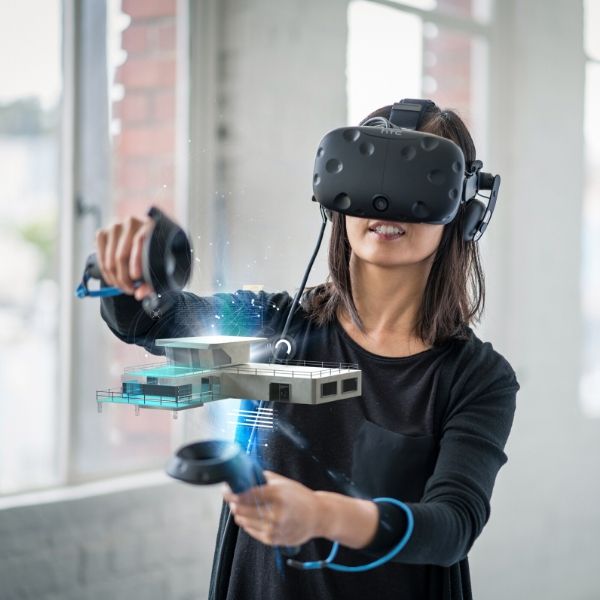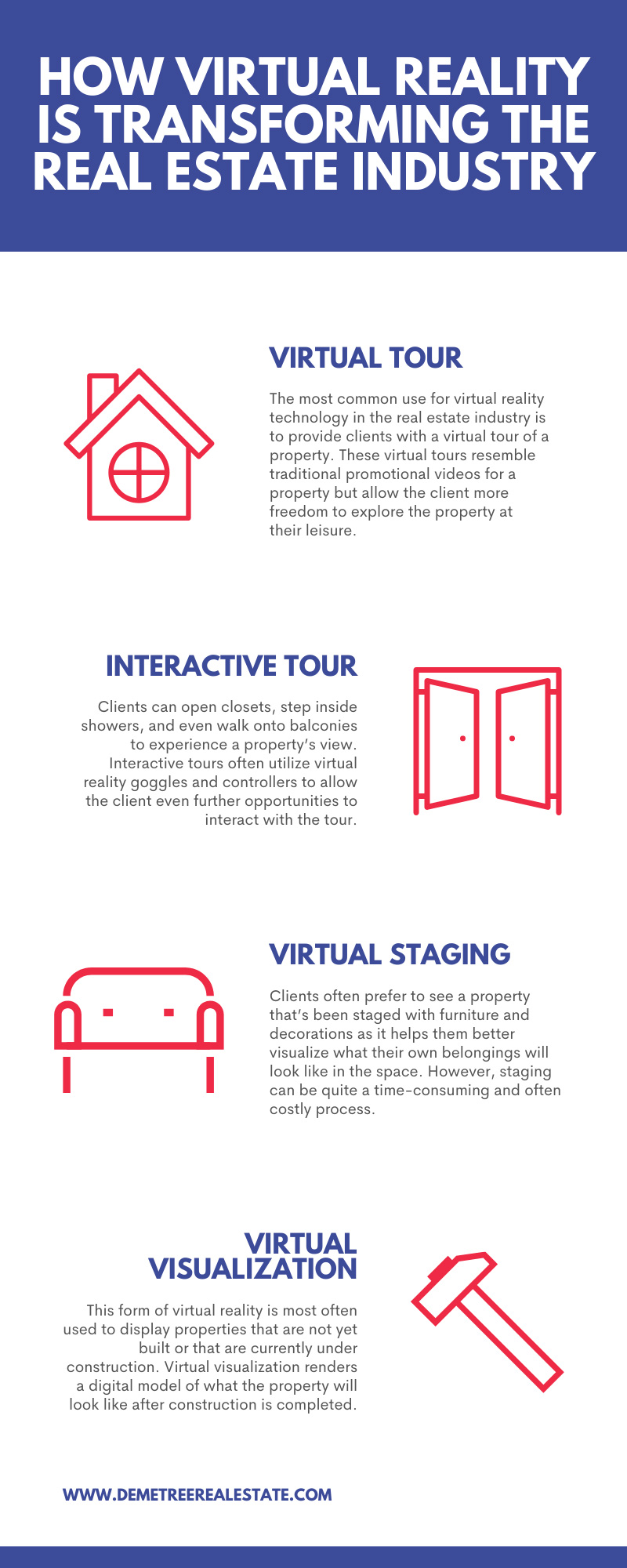 Technology impacts our daily lives in more ways than many people realize. New advancements in digital technology continue to streamline business operations that were once quite time-consuming and costly. The real estate industry has significantly benefited from technological advancements such as innovations in virtual and augmented reality. Virtual reality has made the home-buying process much faster and easier for both the client and the agent. This guide explores how virtual reality is transforming the real estate industry through the use of various digital mediums.
Technology impacts our daily lives in more ways than many people realize. New advancements in digital technology continue to streamline business operations that were once quite time-consuming and costly. The real estate industry has significantly benefited from technological advancements such as innovations in virtual and augmented reality. Virtual reality has made the home-buying process much faster and easier for both the client and the agent. This guide explores how virtual reality is transforming the real estate industry through the use of various digital mediums.
Virtual reality vs. augmented reality
In order to properly understand how virtual reality is transforming the real estate industry, it’s important to first understand the difference between virtual reality and augmented reality. The terms are often used interchangeably, despite the fact that they refer to quite different things. Virtual reality is slightly more common and has recently been made popular for video gaming. Virtual reality is a completely immersive experience that places the user in an entirely digital space, usually through virtual-reality goggles and 360-degree videos. The movements of the user in real life are replicated exactly in the digital video, allowing the user to experience the game or video in real time. Augmented reality is slightly different and incorporates more realistic elements in the overall experience. Augmented reality generally uses a smartphone or camera to produce a live view of an area that is then altered to include digital elements. This format is also commonly used for gaming purposes but is most commonly used in phone applications. Both virtual and augmented reality are used in real estate and may even be used in tandem to create an experience known as mixed reality.
Uses of virtual reality in real estate
Virtual tour
The most common use for virtual reality technology in the real estate industry is to provide clients with a virtual tour of a property. These virtual tours resemble traditional promotional videos for a property but allow the client more freedom to explore the property at their leisure. Properties are generally filmed or photographed using a 360-degree camera. Using these photos, clients can click to view different areas of the property in extreme detail. The 360-degree camera allows the client to easily view all areas of the property from multiple angles to ensure they know exactly what they can expect with a given property. While some virtual tours do use virtual goggles the majority of them are conducted via computer and video. This form of technology is extremely prevalent at the moment, as many clients are currently unable to view properties in person because of the spread of COVID-19. Virtual tours are also very beneficial for clients looking to purchase a property in a location that’s far away from where they currently reside.
Interactive tour
Interactive tours are quite similar to virtual tours in that they allow a client to browse a property at their leisure. However, interactive tours expand on the technology of virtual tours and enable the client to experience the intricate features of the property first-hand. Clients can open closets, step inside showers, and even walk onto balconies to experience a property’s view. Interactive tours often utilize virtual reality goggles and controllers to allow the client even further opportunities to interact with the tour. The other main difference between virtual tours and interactive tours is the methods used to create the digital tour itself. Unlike virtual tours, which utilize photography and film to showcase a property, interactive tours tend to use digital-rendering software instead. This software constructs a digital replica of the property. This replica is constructed to scale and serves as an accurate reflection of what clients can expect when they step onto the real property for the first time.
Virtual staging
Staging can play a large role in the final sale of a property. Clients often prefer to see a property that’s been staged with furniture and decorations as it helps them better visualize what their own belongings will look like in the space. However, staging can be quite a time-consuming and often costly process. As a way to save both time and money, many real estate agents are now turning to virtual staging instead. Virtual staging most frequently utilizes augmented reality technology rather than virtual reality. This technology is generally paired with an in-person tour of a property. The property is first shown without any staging, allowing the client to see the layout and architecture of the property without any additional distractions. Using augmented reality, the client is then shown the virtually staged version of the home. The client walks through the property and uses a camera or smartphone to see a digital rendering of how the space will appear when fully furnished. The client can quickly glance back and forth between the staged and unstaged versions of the property, providing them with a clearer vision of the many different ways the space can be used and furnished. Staging properties in this fashion allows agents to save on costs of traditional staging methods and reduces the amount of time spent loading and unloading furniture into a property.
Virtual visualization
The last point in our guide to how virtual reality is transforming the real estate industry involves digital models. The same technology used in interactive tours is also frequently used for virtual visualization. This form of virtual reality is most often used to display properties that are not yet built or that are currently under construction. Virtual visualization renders a digital model of what the property will look like after construction is completed. This is very beneficial for clients who intend to purchase a property and remodel it in order to make it their own. This is a very cost-effective form of technology for both clients and agents. Clients are able to clearly see the end product of a construction project before they place an offer on a property or agree to certain renovations. Meanwhile the agent is able to save money on the production of a traditional scale model of the property. This technology helps mitigate expectations for both the client and the agent so both parties can end things on a happy note.
For more information on the use of virtual reality in real estate or to virtually browse commercial real estate properties in Winter Park, FL, and the surrounding areas, contact our team at Demetree Real Estate Services.

